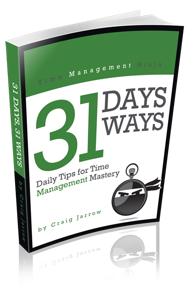
Take a look at your calendar today.
Do you have any meetings that are scheduled back-to-back?
If so, you are setting yourself up for conflicts, stress, and missed appointments.
Back-to-Back Meetings Don’t Work
You cannot be in two places at once.
Yet, your meetings are scheduled adjacent to each other, so that the moment one ends… another is scheduled to begin.
That doesn’t sound like a good strategy.
How do you plan on getting from one place to the next instantly?
It’s not going to happen.
“Back-to-back meetings are a recipe for running late.”
One of your meetings will run long. (Or even right up to the start of the next hour.) And then you will be late to your next meeting… even if it is a conference call.
Or your next meeting will be located on another floor or in another building. And then you will find yourself hustling it all the way to your next location.
Either way, you will end up saying the same words, “Sorry I am late, I was in another meeting.”
Don’t Create Your Own Meeting Conflicts
Don’t cram your calendar with back-to-back meetings. (Or let others do it.)
Make sure that you are realistic about when meetings will end and how long it will actually take you to get to your next appointment.
(I am surprised that more calendars don’t support the ability to “prevent” these conflicts. Outlook doesn’t support it. Calend.ly does have this feature!)
If you avoid back-to-back meetings you will find that you have less rush and stress in your day.
And you might just make it to that next meeting on time!
Question: Check your calendar. How many back-to-back meetings and appointments do you have this week? You can leave a comment by clicking here. I am the author of Time Management Ninja and help individuals and companies reclaim their time to be more productive. As well, I am the author of the book
I am the author of Time Management Ninja and help individuals and companies reclaim their time to be more productive. As well, I am the author of the book 

Thanks for a great post, as usual.
I used to work in a job that involved lots of meetings & time visiting clients. However, our managers were very good at reminding us to schedule days in the office/working from home where we just spent time writing up reports, without any meetings on that day.
I went into MS Outlook and set the default meeting time to 25 minutes instead of 30 minutes. Guaranteed 5 minute buffer!
Excellent idea!